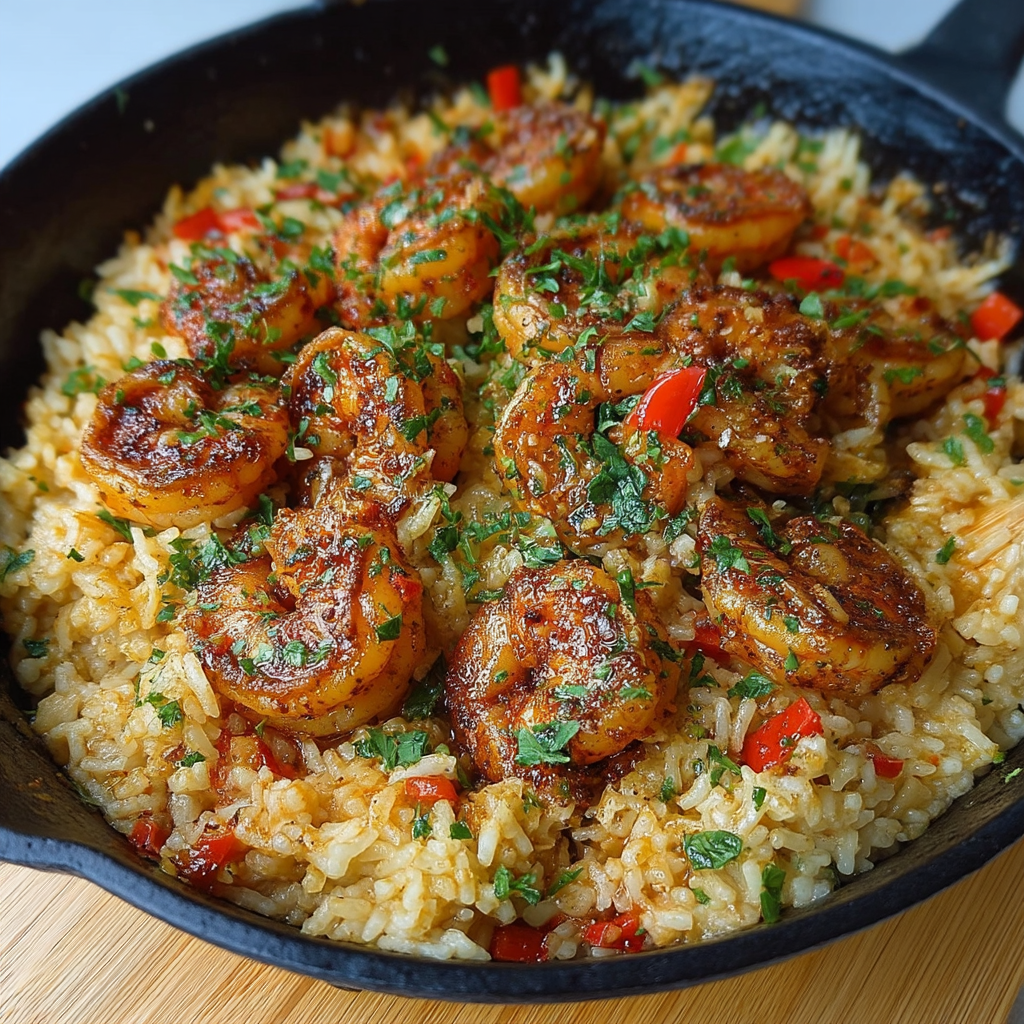Introduction to the Recipe
Shrimp Dirty Rice Skillet is a hearty, flavor-packed Southern classic that brings together land and sea in one satisfying, skillet-cooked dish. Combining juicy ground beef, spiced pork sausage, and succulent shrimp with fluffy white rice, bold Cajun-inspired spices, and a savory broth base, this dish is a one-pan wonder that’s both comforting and bursting with depth. The result is a soulful, umami-rich meal that’s ready to feed a crowd or satisfy your weeknight dinner cravings with ease.
Dirty rice originated in Louisiana and gets its name from the deep color it takes on from cooked meats and spices. Our version adds a coastal spin by introducing shrimp, making it an exciting surf-and-turf fusion. A medley of garlic, onion, thyme, and peppers simmers in a rich roux made with flour and oil, elevating every bite. This dish is all about bold layers of flavor, and with a little prep, you’ll be amazed how quickly it comes together.
Want to learn more about the roots of dirty rice? Here’s a great deep dive into its Southern heritage. And if you’re interested in how to properly sear shrimp for maximum flavor, you’ll find some excellent tips that apply here too.
Whether you’re feeding a hungry family or meal prepping for the week, this Shrimp Dirty Rice Skillet delivers on both taste and convenience—and it’s all done in one pan.
Basic Recipe: Ingredients and Instructions
Print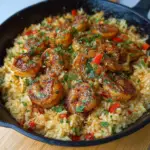
Shrimp Dirty Rice Skillet
Description
This Shrimp Dirty Rice Skillet combines sausage, beef, and shrimp in bold Cajun spices for a one-pan Southern comfort dish.
Ingredients
Proteins:
-
450 grams ground beef
-
450 grams ground pork sausage
-
12 medium shrimp, peeled, deveined, tails removed
Grains:
-
4 cups cooked white rice
Liquids:
-
480 milliliters chicken broth (prepared from bouillon)
Vegetables:
-
1.5 cups mixed onions and bell peppers, finely chopped
Pantry Staples:
-
3 tablespoons vegetable oil, divided
-
¼ cup plain flour
Seasonings:
-
1 teaspoon seafood seasoning
-
1 tablespoon dried oregano
-
3 teaspoons minced garlic
-
1 teaspoon dried thyme
-
1 tablespoon garlic powder
-
1 teaspoon onion powder
-
1 teaspoon chili powder
-
½ teaspoon ground black pepper (or to taste)
-
½ teaspoon salt (or to taste)
-
1 pinch cayenne pepper
Instructions
-
Brown the meats: In a large skillet over medium heat, add 1 tablespoon vegetable oil. Brown the ground beef and pork sausage until fully cooked. Remove and set aside.
-
Sear the shrimp: Add another tablespoon of oil to the pan. Sear shrimp for 1–2 minutes per side until just pink. Remove and set aside.
-
Make the roux: Add remaining tablespoon of oil to the pan, then whisk in the flour. Cook over medium-low heat, stirring constantly, until the mixture turns golden brown and smells nutty—about 5–7 minutes.
-
Sauté the aromatics: Add onions, bell peppers, and garlic to the roux. Cook until soft and fragrant, about 4 minutes.
-
Add seasonings and broth: Stir in all the dried herbs and spices. Pour in the chicken broth and stir well, scraping up any browned bits from the pan.
-
Combine everything: Return cooked meats and shrimp to the skillet. Stir in cooked white rice and mix until everything is well combined and heated through.
-
Adjust seasoning & serve: Taste and adjust salt, pepper, or spice if needed. Garnish with parsley or scallions, if desired, and serve hot.
Notes
Pre-cook the rice in advance to speed up prep.
For a deeper roux flavor, cook the flour longer until it’s peanut butter-colored.
Adjust cayenne and chili powder to your preferred spice level.
Don’t overcook the shrimp—they’ll finish cooking in the final skillet mix.
Advanced Techniques
Building a deep, flavorful roux
The roux is foundational in many Southern dishes, including dirty rice. To deepen flavor, cook the flour and oil low and slow, stirring constantly. Aim for a golden to light brown color—it should smell nutty, not burnt. A well-made roux thickens the dish and provides a rich, earthy backbone that ties the flavors together.
Perfectly balanced seasoning blends
Dirty rice is only as good as its seasoning. Use freshly ground spices if possible and toast them briefly before adding liquids to enhance their aroma. You can also make your own Cajun blend tailored to your spice tolerance—adjusting cayenne, paprika, and garlic powder to suit your palate.
Cooking shrimp just right
Shrimp cook fast—too fast, in fact. Overcooked shrimp become rubbery. Always sear them separately and set aside early. They’ll finish reheating when mixed into the hot rice later. If using large shrimp, butterfly them for more surface area and better integration into the rice.
Rice texture management
Use day-old rice or rice that has been cooled and fluffed to avoid mushy results. Freshly cooked rice tends to be too sticky for skillet dishes like this. Spread hot rice on a sheet pan to cool quickly if you’re in a rush.
Layering protein for best bites
Cook beef and pork separately to manage grease and avoid steaming. Drain excess fat before combining with the shrimp. This layering helps each protein stand out in both flavor and texture, making the dish feel more dynamic.
See more advanced recipes at cookingwhite.com
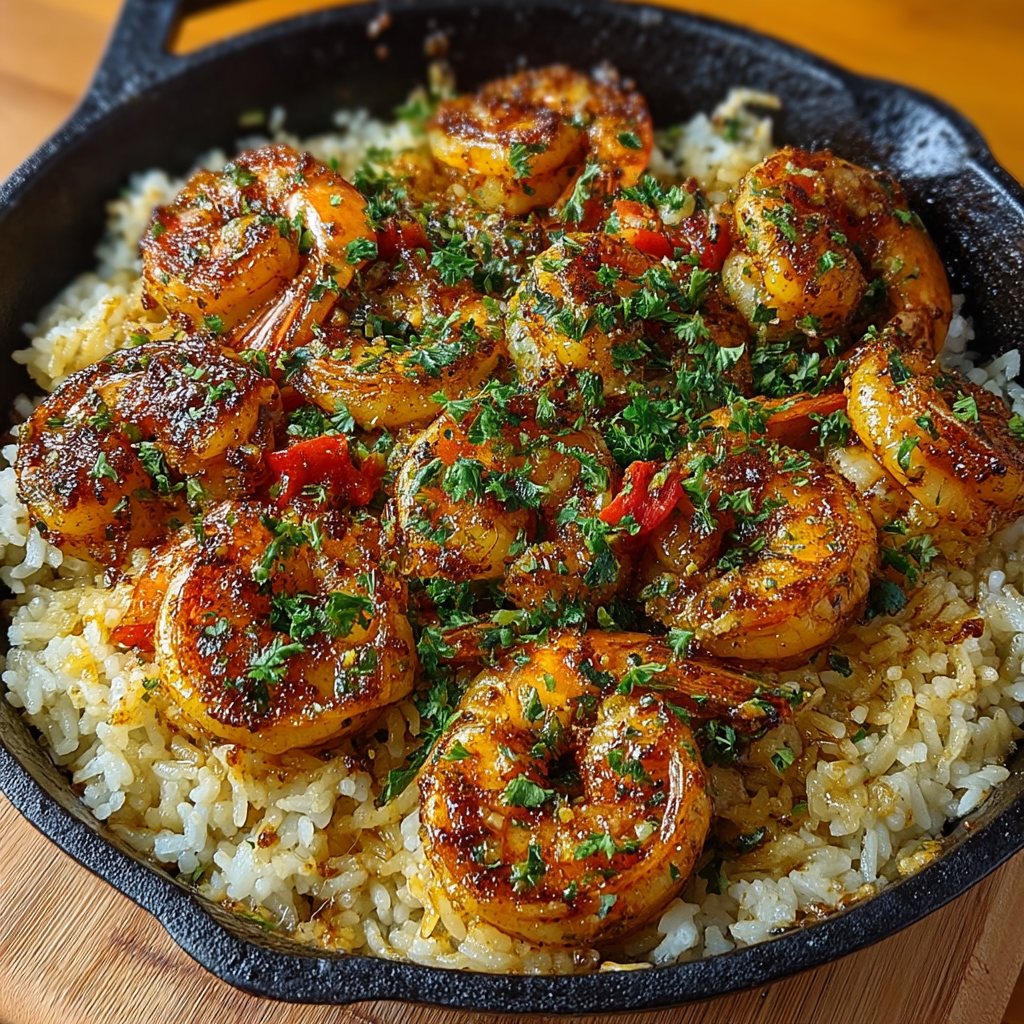
Storage, Shelf Life, and Maintenance Tips
Refrigerating leftovers
Transfer cooled leftovers to an airtight container and refrigerate for up to 4 days. The flavors often deepen overnight, making it a great make-ahead meal.
Freezing for longer storage
Dirty rice freezes well. Portion into freezer-safe bags or containers and freeze for up to 2 months. Thaw in the fridge overnight before reheating.
Reheating for best texture
Reheat on the stovetop with a splash of broth or water to loosen the rice and prevent dryness. Microwave in short bursts, stirring between intervals, for even heating.
Avoiding soggy rice after storing
Don’t over-moisten when reheating. Use just enough liquid to revive the texture. If the rice becomes too wet, a quick flash in a dry skillet can help restore balance.
Batch prepping and storing components
You can pre-cook proteins and rice separately and store them for up to 3 days. Combine and heat just before serving for a fresh finish every time.
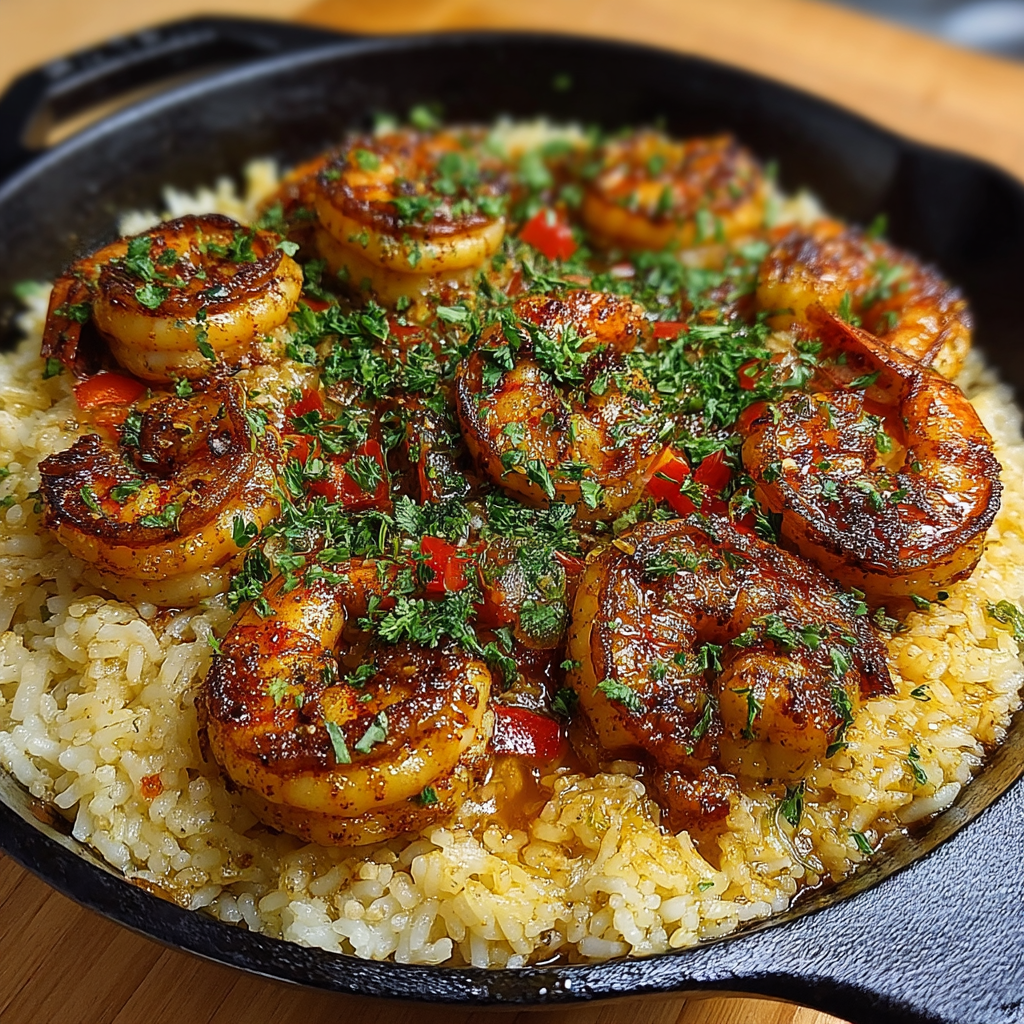
Dietary Adaptations and Substitutions
Making it gluten-free
Replace flour with a gluten-free alternative like rice flour or a 1:1 gluten-free baking mix. Ensure your broth and sausage are certified gluten-free.
Low-carb version
Swap out rice for cauliflower rice. Sauté it separately before mixing in to avoid excess moisture. This keeps the dish low in carbs while still flavorful.
Pescatarian-friendly adaptation
Skip the beef and pork, and increase the shrimp quantity. Add chopped scallops or even white fish chunks for variety.
Spice control for sensitive eaters
Cut cayenne and chili powder by half or eliminate them altogether. Boost flavor instead with smoked paprika and a touch of lemon juice for brightness.
Vegetarian version
Substitute the proteins with plant-based sausage and mushrooms. Use vegetable broth instead of chicken. You can even toss in some black beans for extra texture and protein.
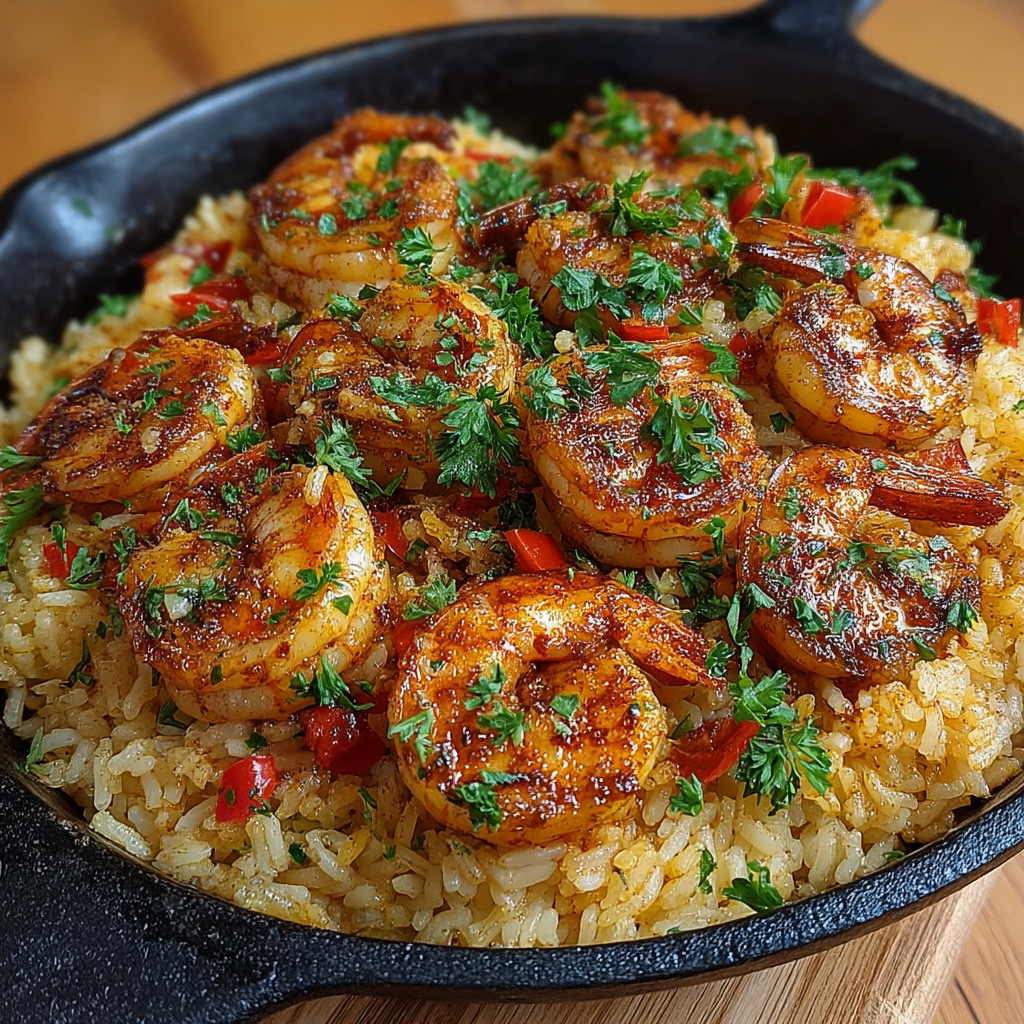
FAQs About the Recipe
What makes it “dirty” rice?
The term “dirty” comes from the color the rice takes on after absorbing cooked meat bits, spices, and browned vegetables. It’s not a flaw—it’s flavor!
Can I make this in advance for a crowd?
Yes! It’s ideal for batch cooking. Prep ahead, refrigerate, and reheat just before serving. Add a splash of broth to refresh the texture if needed.
Can I use a different type of rice?
Long-grain white rice is traditional, but you can use jasmine, basmati, or even brown rice. Just be sure it’s fully cooked and not sticky.
Is it necessary to use both ground beef and sausage?
No, but the mix provides a balance of richness (beef) and spice (sausage). You can use one or the other depending on preference or dietary needs.
What’s the best skillet to use?
A large cast iron or heavy-bottomed skillet works best to hold heat evenly and allow the roux to develop flavor. Avoid nonstick for roux-making.
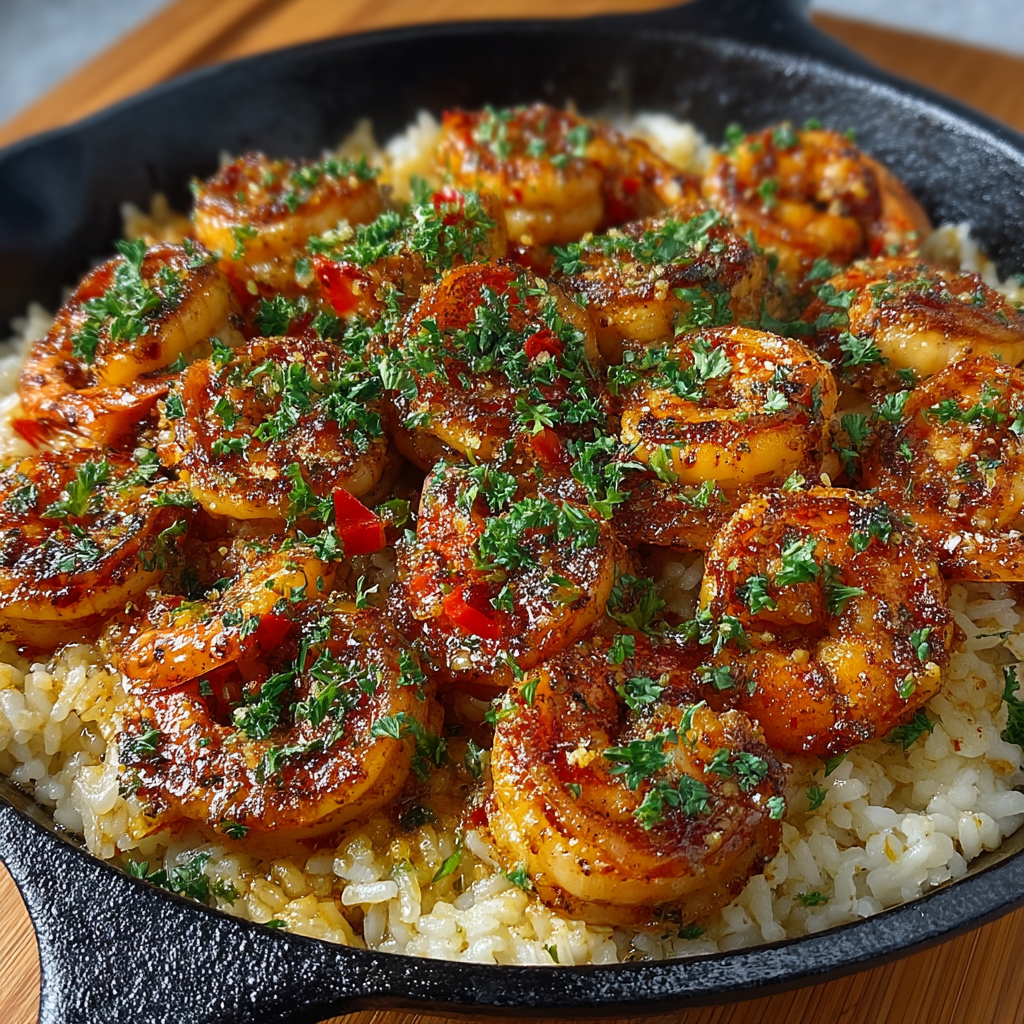
Conclusion & Final Thoughts
The Shrimp Dirty Rice Skillet is a celebration of bold Southern flavor with a coastal flair. Combining the savory depth of ground meats, the brininess of shrimp, and the comfort of spiced rice, this dish satisfies both weeknight hunger and special occasion cravings. The ease of one-skillet cooking meets the complexity of a dish that tastes like it simmered all day.
What makes it especially appealing is its flexibility—you can dial up the spice, swap out proteins, or prep ahead for a fast, rehe
atable meal. It’s a budget-friendly, crowd-pleasing option that scales easily for large gatherings or cozy dinners. Plus, it’s got that home-cooked magic that makes people come back for seconds.
Whether you’re a seasoned dirty rice lover or trying it for the first time, this version with shrimp and sausage offers something a little unexpected, a little indulgent, and completely delicious. Keep this one in your rotation for comfort food nights, tailgates, or any time you want a skillet full of flavor.

